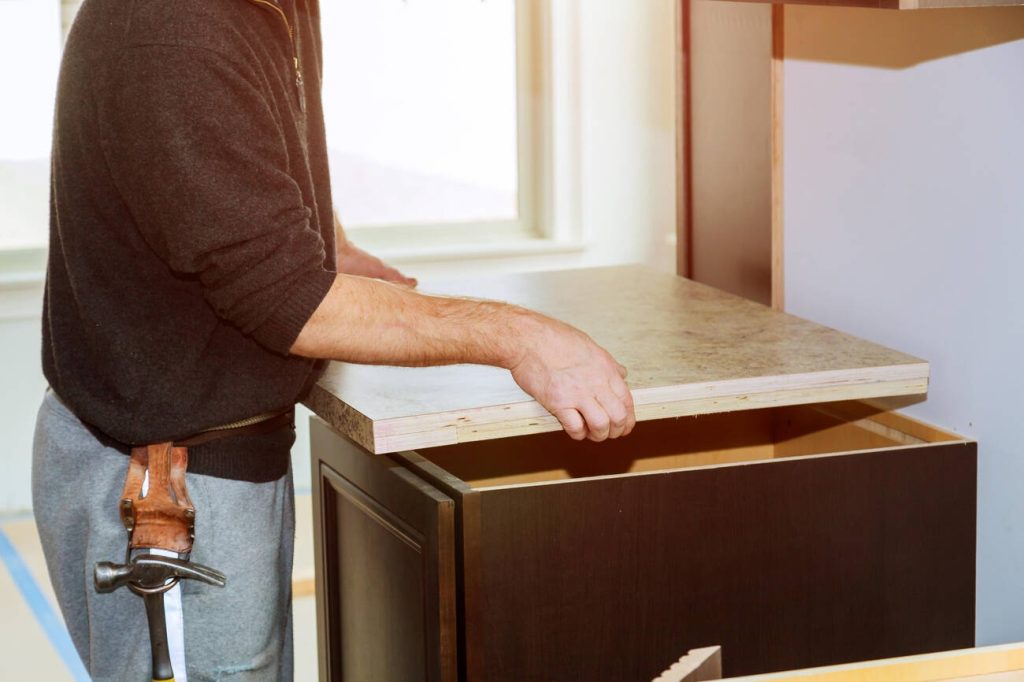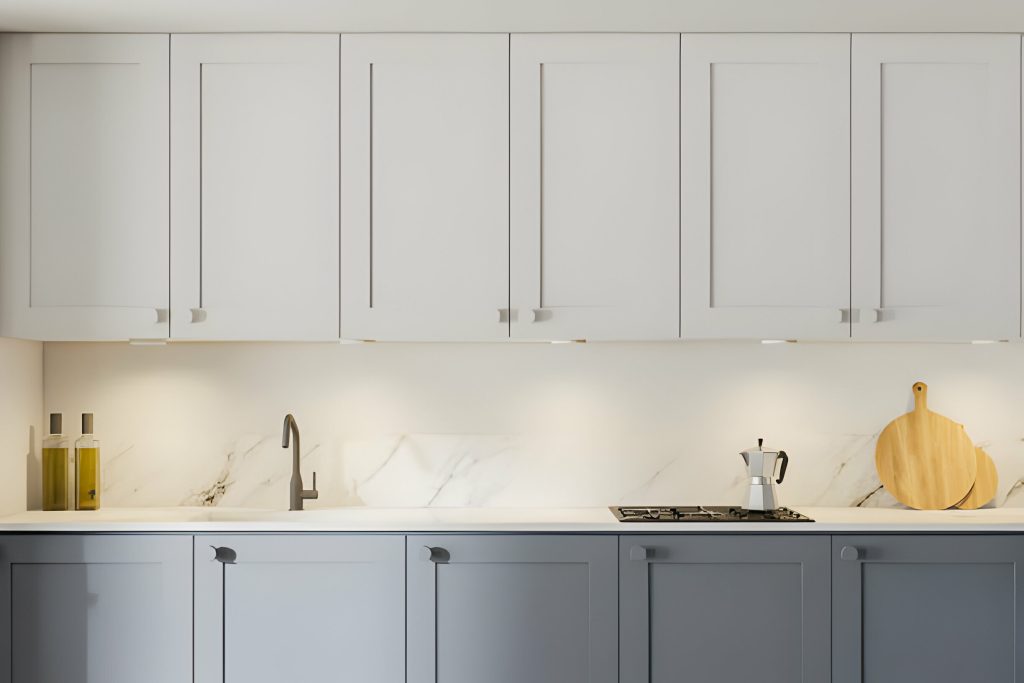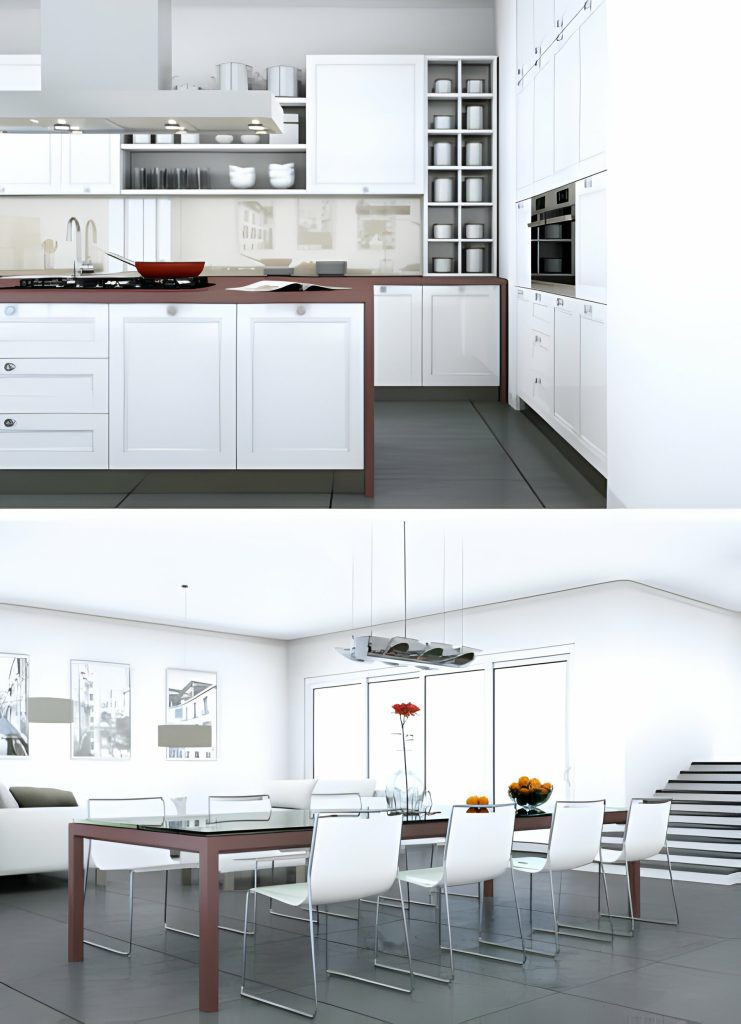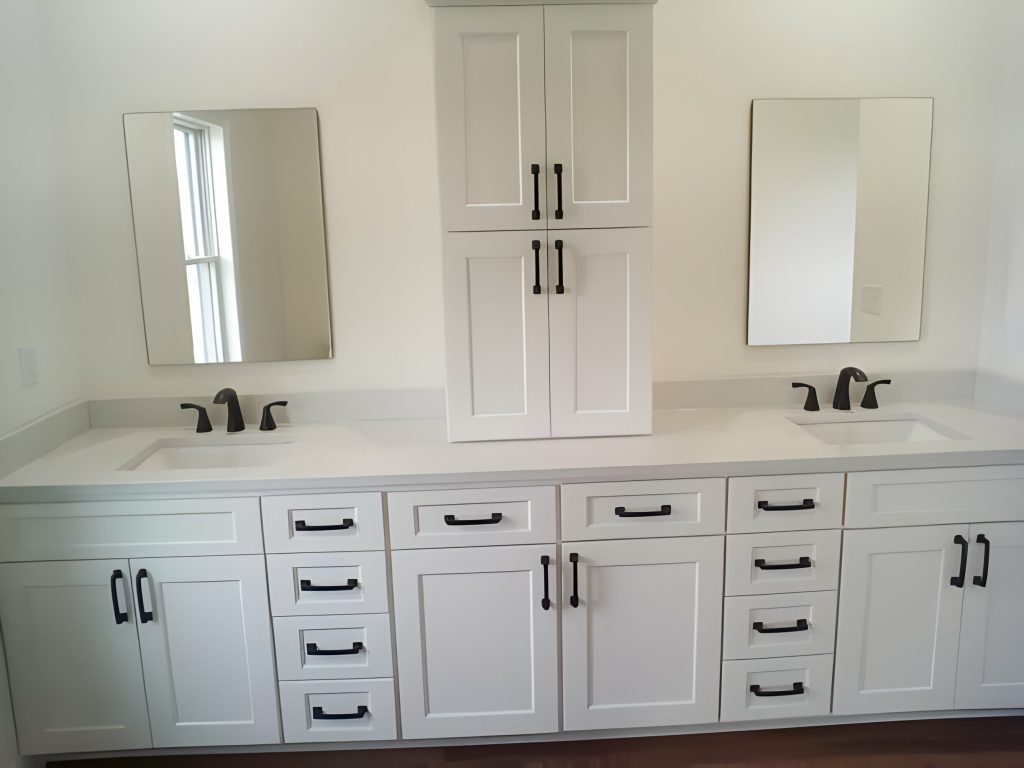By examining grain patterns, joint construction, texture, surface, color, and even the back of the cabinet doors, you’ll be able to determine with confidence what type of material your cabinets are made from. So let’s dive in and find out – are your cabinets laminate or something else entirely?
Visual Examination
You can identify if your cabinets are laminate by visually examining them for a smooth surface without visible seams. Start by looking at the grain pattern of the cabinets. Laminate cabinets typically have a uniform, artificial grain pattern that repeats across the surface. Next, check the joint construction of the cabinets. Laminate cabinets often have edges that are covered with a thin strip of laminate material, creating seamless corners and edges. Additionally, feel the texture and surface of the cabinets. Laminate cabinets usually have a glossy or matte finish that is smooth to touch. Finally, consider the color and finish of the cabinets. Laminate cabinets come in a wide range of colors and finishes, which may appear more consistent compared to natural wood variations. If you are unsure about identifying laminate cabinets, it is always recommended to seek professional assessment from an expert in cabinetry materials.
Grain Pattern
The grain pattern on the cabinets can help determine if they are made of laminate. Grain identification is one of the quality indicators that can give you insight into the material characteristics of your cabinets. Laminate cabinets often have a printed grain pattern that mimics real wood, but upon closer inspection, you may notice that it lacks depth and variation. Unlike solid wood, laminate cannot be stained because it is not made from natural wood fibers. Instead, laminate offers a wide range of color options and finishes that make it a popular choice for homeowners who want a durable and low-maintenance cabinet solution. When comparing laminate vs. solid wood, keep in mind that solid wood cabinets offer more stainability options and have a richer, organic grain pattern.
Joint Construction
To determine the quality of your cabinets, take a closer look at their joint construction. The joint strength is crucial in assessing the durability and overall quality of your cabinets. Cabinets with strong joints are more likely to withstand daily wear and tear, ensuring longevity. When comparing different materials for cabinet construction, consider their pros and cons in terms of joint strength. Solid wood cabinets often have sturdy joints that contribute to their durability and impact on home value. On the other hand, laminate cabinets may have weaker joints due to their material composition. It’s important to understand these differences as they can affect the lifespan and functionality of your cabinets, ultimately impacting the value they add to your home.
Texture and Surface
Laminate cabinets can have a smooth surface without visible seams. When it comes to understanding the differences between laminate and solid wood cabinets, there are some key points to consider. Laminate cabinets are more affordable than their solid wood counterparts, making them a popular choice for those on a budget. However, there are pros and cons to laminate cabinets. On the positive side, they are durable, easy to clean, and come in a variety of colors and textures. On the downside, they can be prone to scratching and chipping over time. To care for your laminate cabinets, avoid using abrasive cleaners and instead opt for mild soap and water. If you want to upgrade your laminate cabinets, you have the option to either paint or replace them entirely. Finally, when it comes to trends in laminate cabinets, sleek and modern designs are in while outdated styles are out.
Color and Finish
When it comes to color and finish, you have a variety of options for your cabinets. Choosing the right cabinet material is important in achieving the desired look for your kitchen or bathroom. One popular option is laminate cabinets. Laminate cabinets offer several advantages, such as affordability and durability. They come in a wide range of colors and finishes, allowing you to customize the look of your space. Laminate cabinets are also easy to clean and maintain, requiring only regular wiping with a damp cloth. However, it’s worth considering that laminate cabinets may not add as much value to your home compared to solid wood cabinets. If you prioritize longevity and potential resale value, solid wood cabinets might be a better choice for you.
Back of Cabinet Doors
The lack of a matching back may indicate the use of laminate or thermofoil doors. When identifying the material of your cabinets, it’s important to examine features like grain, joint construction, texture, and color. Solid wood cabinets have a visible grain pattern that can be stained, while plywood, MDF, or particleboard may suggest engineered materials. Laminate cabinets have a smooth surface without visible seams and often come with a matching back. On the other hand, solid wood cabinets are known for their durability and versatility. They have a positive impact on home value and can be customized to fit your style preferences. So if you’re looking for long-lasting quality and added value to your home, solid wood cabinets might be the way to go.
Professional Assessment
If you’re unsure about the material of your cabinets, it may be helpful to consult with a professional for an accurate assessment. Here are some reasons why seeking expert opinion and material analysis is important:
- Cabinet construction: A professional can examine the construction of your cabinets to determine if they are made of laminate or solid wood.
- Laminate identification techniques: Experts have specialized knowledge and tools to identify laminate materials based on visual cues such as texture, color, and seamlessness.
- Comparing laminate and solid wood cabinets: Professionals can provide insights into the pros and cons of each material, helping you make an informed decision.
- Accurate assessment: An expert’s opinion ensures that you have reliable information about your cabinet materials, which is crucial for maintenance, repairs, or upgrades.
- Peace of mind: Consulting with a professional eliminates any doubts or uncertainties about the material composition of your cabinets.



